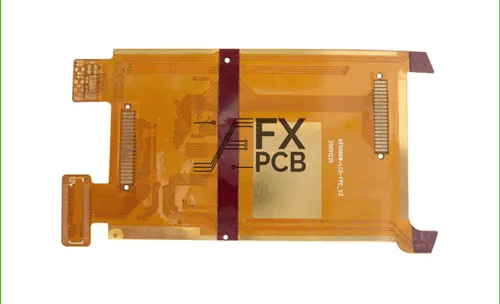The Advantages of Using Multilayer PCBs in Modern Electronics
Electronic devices are everywhere, and we rely on them heavily. This reliance has sparked a growing need for efficient and dependable circuitry. Multi-layer printed circuit boards (PCBs) have emerged as a crucial solution to meet these demands. Explore the numerous advantages that multilayer PCB offer in modern electronics.
What Are Multilayer PCBs?
Before discussing their advantages, let’s understand multilayer PCBs. Traditional PCBs consist of a single layer of substrate material with conductive traces etched onto it. In contrast, multilayer PCBs have multiple layers of substrate material with conductive traces sandwiched between them, connected by vias.
Advantages of Multilayer PCBs
Enhanced Design Flexibility: Multilayer PCBs provide engineers with increased design flexibility compared to single-layer or double-layer boards. With multiple layers available, designers can route complex circuits more efficiently, reducing signal interference and improving overall performance. This flexibility allows for integrating advanced features and functionalities into electronic devices, meeting consumers’ ever-changing demands.
Higher Component Density: In modern electronics, miniaturization is key. Multilayer PCBs allow for higher component density by accommodating more circuitry in a smaller space. This is particularly beneficial for compact devices such as smartphones, where space is limited, but functionality is paramount. By packing more components into a smaller footprint, multilayer PCBs enable the development of sleeker and more portable electronic devices without compromising on performance.
Improved Signal Integrity: Signal integrity is critical in electronic systems, especially in high-speed applications like data communication and digital signal processing. Multilayer PCBs help maintain signal integrity by reducing noise, crosstalk, and electromagnetic interference between traces and components. By carefully designing signal paths and minimizing signal distortion, multilayer PCBs ensure reliable data transmission and optimal system performance, even in challenging environments.
Enhanced Power Distribution: Efficient power distribution is essential for the proper functioning of electronic devices. Multilayer PCBs offer improved power distribution by providing dedicated power and ground planes, minimizing voltage drops, and ensuring stable operation across the entire circuit. This enhanced power delivery improves the performance of individual components and enhances the overall reliability and longevity of electronic devices, reducing the likelihood of power-related failures.
Increased Reliability: Reliability is a top priority in modern electronics, where even the slightest malfunction can have significant consequences. Thanks to their robust construction and optimized signal paths, multilayer PCBs enhance reliability by reducing the risk of mechanical and electrical failures. By distributing components and traces across multiple layers, multilayer PCBs mitigate the effects of thermal expansion, vibration, and environmental factors, resulting in more durable and dependable electronic devices that meet the stringent quality standards of today’s market.
Simplified Assembly: Assembly processes play a significant role in the manufacturing of electronic devices. Multilayer PCBs streamline the assembly process by consolidating multiple circuit layers into a single board, reducing the number of components and solder joints required, lowering manufacturing costs, and improving efficiency. This simplified assembly reduces the risk of assembly errors and defects and accelerates the production cycle, enabling manufacturers to bring innovative products to market faster and more cost-effectively.
Cost-Effectiveness: While multilayer PCBs may seem more complex than their single-layer counterparts, they often prove to be more cost-effective in the long run. The increased functionality, reliability, and ease of assembly offered by multilayer PCBs outweigh the initial investment, making them a preferred choice for many electronic applications. By minimizing the need for additional components, reducing assembly time and labor costs, and enhancing overall product quality and performance, multilayer PCBs provide a compelling return on investment for manufacturers and consumers, ensuring that electronic devices remain affordable and accessible to a wide range of users.
Enhanced Thermal Management: Temperature control is crucial in electronic devices to ensure optimal performance and prevent overheating-related issues. Multilayer PCBs offer enhanced thermal management capabilities by incorporating additional copper layers and heat sinks into the design. These features help dissipate heat more efficiently, maintaining lower operating temperatures and prolonging the lifespan of electronic components. By effectively managing thermal dissipation, multilayer PCBs enable the development of high-performance devices that operate reliably under demanding conditions.
Facilitated High-Speed Design: Signal integrity is paramount in applications requiring high-speed data transmission, such as networking equipment and digital signal processing systems. Multilayer PCBs facilitate high-speed design by minimizing signal distortion, impedance mismatch, and electromagnetic interference. With controlled impedance routing and signal propagation across multiple layers, these PCBs ensure reliable data transmission at ultra-fast speeds, enabling the development of cutting-edge technologies that push the boundaries of connectivity and data processing.
Support for Advanced Technologies: As electronic devices evolve, incorporating advanced technologies such as wireless communication, IoT connectivity, and artificial intelligence becomes increasingly important. Multilayer PCBs provide the necessary infrastructure to support these technologies by offering ample space for integrating additional components, antennas, and sensors. With the flexibility to accommodate diverse functionalities within a compact form factor, multilayer PCBs empower designers to create innovative products that deliver enhanced connectivity, intelligence, and user experiences in various applications, from smart homes to industrial automation.
Important NOTE
The advantages of using multilayer PCBs in modern electronics are undeniable. From enhanced design flexibility and higher component density to improved signal integrity and reliability, multilayer PCBs offer various benefits that make them indispensable in today’s electronic landscape. As technology continues to evolve, multilayer PCBs will play an essential role in shaping the future of electronic devices, driving innovation, and enabling the development of smarter, more efficient, and more reliable products that enrich our lives and empower the advancement of society!



